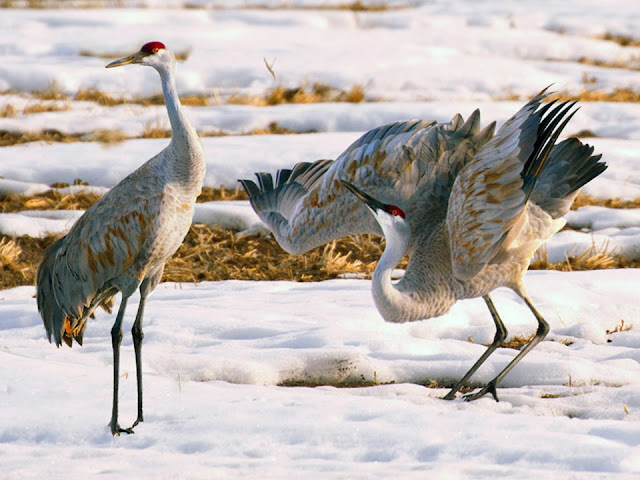Intercalary August、閏8月
On the
11th, Shigesaburou and his wife moved to Shigezou’s house. Yoshino
was invited for a drink and a meal. Shigezou probably took care of the old
couple. It was neighbor’s support. According to the record 1300 years ago,
if an old person lost all family members, he/she lived in a neighbor’s house in this area. It was a traditional supporting system. If we rely on government support, we have to pay more tax. I believe neighbor’s support is a good way; it also strengthens the local
community.
11日、重三郎さんの夫婦が、繁蔵の家へ引っ越しました。「重三郎は当分隠宅にいるつもり」と書かれています。主は、酒に招かれました。これは、老人ホームの役割を村人が果たしていたのだと思います。互助ですね。近隣の松戸でも、律令時代から親戚ではない老人と同居している記録があります。公助がなかったのでしょうけど、互助で対応できれば、税金を安くできて良いと思います。地域の繋がりも強くなります。
September、9月
September
is a festival season. Yoshino’s family invited relatives to their
village festival; they also visited festivals in the neighboring villages. They
harvested rice simultaneously, and they finished it on the 27th.
It was a happy month.
9月は祭りのシーズンです。村の祭りに親戚を招いたり、近隣の村の祭りに出かけたり。稲刈りも同時に行っていて、27日が刈り仕舞いでした。嬉しい季節ですね。
October、10月
On the
9th, Yoshino went to Raijingu (thunder shrine); it was his
turn to go and pray. He returned and brought the ofuda (talismans) to Naka
village on the 18th. Next day, he delivered the ofuda from Raijin
and Tukuba to villagers, which means he also went to Tsukuba Shrine. The
Raijin-kou party was held at Shibajyou’s house in the evening. It was a fun
time!
On the 12th. Oura’s memorial service (hundred day
after the death) was held; She had been a Yoshino's family member. On the
21st, Yoshino received a letter from her ex-husband saying that
he would get married. Actually, he had a wedding ceremony on the 5th
of December, but Yoshino didn’t attend. It was the order of the time that they
got remarried soon.
Mt. Tsukuba and Tsukubasan Shrine、筑波山と筑波山神社
9日、主は雷神宮へ参詣に行きました。主の順番が来たのですね。村に戻り、18日に雷神札を中村に配っています。翌日、村方に雷神札と筑波札を配りました。筑波山にも行ってきました。夕方は芝常さんの家で雷神講が開かれました。楽しい時間です。
12日、駒木新田に嫁いだおうらさんの百か日でした。21日、夫の八郎兵衛さんから後妻についての手紙が来ました。八郎兵衛さんは、12月15日に再婚しましたが、主は欠席。八郎兵衛さんは17日に主を訪ねました。相変わらず、死別から再婚までの期間が短いです。
November、11月
On the 2nd, Yoshino received an official notice saying
that Yugyou (a holy monk of Jishu-sect of Buddhism) would pass the Mito kaidou
(highway), he was ordered to dispatch two carries and two horses to help the
traffic. VIP brought lots of luggage. Btw, Yoshino’s mother went to the
temple in Kamihongou village on the 5th, because Yugyou held an
event.
2日に、時宗の遊行上人が通過する知らせが来て、即日、人足二人(勘左衛門さんと組頭の半左衛門さん)、馬は二匹(喜右衛門さんと久七さんが馬子)を出しました。VIPは荷物が多いので大変です。でも、5日に近くの上本郷村に遊行上人が来られたということで、主の母が出かけました。
On the
20th, it is written that a crane was sent from Natogaya. It is
one of nationally protected species so we cannot catch them now. I was
surprised that they ate it! I didn’t know people used to do that.
<Added on the 5th of March> Ogyu Sorai (1666〜1728) wrote that catching crane was prohibited, so I'm not sure how Yoshino delt with it.
Cranes、鶴 https://publicdomainq.net/sandhill-crane-couple-bird-0032088/
20日、「名戸ヶ谷より鶴一羽、届き来」と書かれています。今は天然記念物で捕まえることはできませんが、当時は食用にもなったということでビックリです。
<以下、2022年3月5日追記> 一方で、荻生徂徠の『政談』に下総国相馬郡において鶴を1羽殺したことによって10人の農民が処刑された話が記載されているということで(禁鳥 - Wikipedia)、届いた鶴はどうなったのか、分かりません。
December、12月
On the
9th, “Oyashiki (literally means lord’s residence)-mujin (lottery)”
was held first time. It was a lottery to gather money for the lord! On the
24th, Yoshino was asked for payment; 27 ryo ($12,000) and revenue of
mujin. Yoshino gathered villagers in the evening, and collected installment
of mujin in advance. A villager of Hiraga brought the money to the lord
in Edo. Probably, the lord needed money to be paid for his role such as the guard of the shogun.
FYI, the shogun departed to Kyoto to meet the emperor on the 13th of
next February accompanied with three thousand samurai. It was the first
time in 229 years. The political situation was changing after westerners came
to Japan. The shogunate (Bakufu) fell five years later.
Gate of a residence of samurai in high
class、古河藩家老屋敷 @Koga City Museum of History 古河歴史博物館
9日、次三郎さんの家で、「御屋敷無尽」の初会が行われました。御屋敷用の資金調達です。24日、横須賀村から、先納の27両と、御屋敷頼母子講(無尽)の残金を請求されました。夜、村人が集まり、「頼母子講足し金預け札調印」とあるので、講の積立金を前借りして、領収証を発行したようです。翌日、平賀の善蔵さんが江戸にお金を持っていきました。警備に駆り出されることが多いのか、御屋敷も資金繰りが悪くなっているようです。ちなみに、将軍家茂は翌年の2月13日に、3千人を率いて将軍としては229年振りとなる上洛に出発しました。
On the
19th, Yasuuemon (villager) had a trouble with residents of the
other village about the land and the money. Those residents visited Yoshino with
anger and complained that Yasuuemon was unreasonable and violent. They said
they would sue him.
On the
27th, the shogunate local officer ordered Yoshino to hold Yasuuemon
in custody, because of the rumors about him. The officer would interrogate
him. On the 28th, a villager brought a report to the lord. On the 29th,
the messenger returned and said that the lord talked with the officer; Yasuuemon
was released and didn’t need to go to the local shogunate office. The lord successfully did his job.
However,
Yasuuemon was not innocence. There were many negotiations between
villagers and subordinates of the lord during the busy year-end. I’m sorry, but I
couldn’t follow the result.
Nothing
is written about the New Year’s Eve.
19日、村の安右衛門さんと他村の人の間で、土地と金の貸し借りに絡んでもめ事があり、他村の人は、安右衛門は「理不尽」「狼藉いたし」と怒っていて、願い出ると主に言いに来ました。
暮れの27日、関東御取締安原尉殿から、「村人の安右衛門は風聞が宜しくない。取り調べるので村役人らへ預けるように」と指示が来ました。28日、安右衛門の預かり書と御屋敷への届出書を持ち、繁蔵さんが出府しました。29日、繁蔵さんが帰村し、御屋敷から関東取締出役へ掛け合った結果、「村預け、御免に相成り候」ということでした。村預けは、軽犯罪者を村で監禁する刑罰です。刑務所も自治ですね。小さな政府です。
安右衛門さんは、無罪釈放になった訳ではなく、年明けも御屋敷、当事者とのやり取りが続きました。すみませんが、結論を掴めていません。この年は、大晦日の記載がありませんでした。
Yoshino’s daily life 01,
About Yoshino and background 吉野家とその頃
Yoshino’s daily life 02,
Life and fun of Yoshino family 吉野家の暮らしと楽しみ
The
details of their live which includes farming and visiting neighbors are written
in No.13 - No.25 (1851)、農事や近所付き合いを含む日々の詳細は1851年の日記の記事(No.13~25)に記載しています。
Yoshino’s daily life 13, The
first half of January in 1851(嘉永4年1月前半)
Previous
post: Yoshino’s daily life 48 (Jan. to Aug. in 1862、文久2年1月~8月)
Next post: Yoshino’s daily life 50 (1863、文久3年)




Comments
Post a Comment